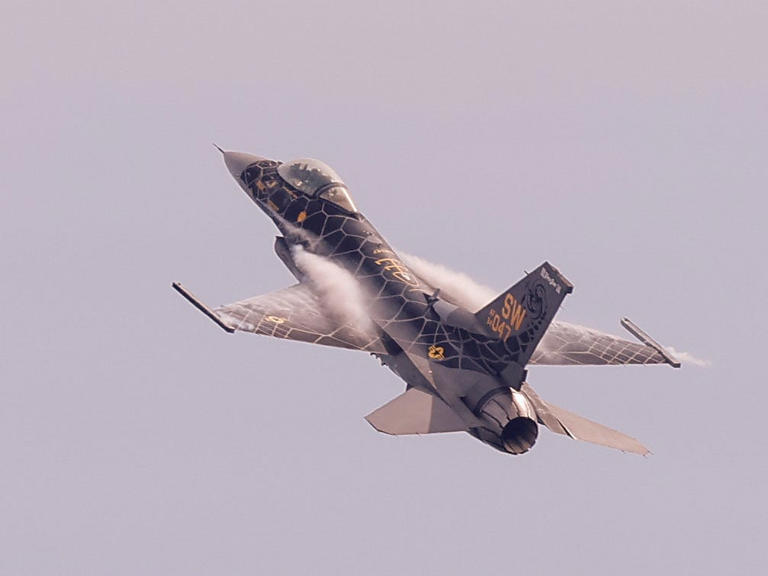Air Force’s Future: AI-Operated Fighter Jet

The Air Force is staking a significant portion of its future air strategy on a fleet of over 1,000 autonomously operated drones, and this spring, its top civilian leader plans to board an AI-operated warplane and take to the skies.
Air Force Secretary Frank Kendall announced to senators on Tuesday during a hearing on the service’s 2025 budget that he intends to enter the cockpit of one of the F-16s that have been retrofitted for drone operations, to personally assess the performance of the AI-controlled aircraft in flight.
“I will be accompanied by a pilot who will simply observe, as will I, while the autonomous technology manages the aircraft,” Kendall informed members of the Senate Appropriations Committee defence panel. “Hopefully, neither of us will need to take control of the airplane.”
Drone warfare has rapidly evolved from a peripheral aspect of combat to a key weapon system. Drones now pose a daily threat in regions like Ukraine and the Middle East. In Ukraine, Russian drones target civilians, while Ukrainian citizens are employing drones to gather intelligence on Russian positions. In the Middle East, groups like the Iranian-backed Houthis routinely deploy advanced drones to target U.S. installations and commercial vessels in the Red Sea.
The Air Force initiated plans for its collaborative combat aircraft (CCA) fleet several years ago, envisioning a scenario where a manned jet would orchestrate multiple AI-driven drones, referred to as “loyal wingmen.”
Details on the exact configuration and scale of this drone fleet remain undisclosed. Kendall noted that the F-16 test flight will serve as an opportunity for him to examine the technology underpinning this future fleet.
This fleet is being tailored specifically for future warfare scenarios, including potential conflicts with adversaries like China, which has significantly bolstered its anti-access capabilities with sophisticated air defence systems that pose risks to manned aircraft. Drones could enhance the Air Force’s capacity to penetrate such defences and are expected to play roles in missions ranging from surveillance to electronic warfare.
The Air Force has allocated $559 million in its 2025 budget to sustain the research and development of the future CCA air system.
“The primary mission for these aircraft was originally conceived as counter-air, but they will have the flexibility to perform other functions,” Kendall explained.
Moreover, Kendall anticipates that the drone fleet will offer cost advantages over developing new manned aircraft. The objective is for each drone to be priced at roughly a quarter to a third of the current cost of an F-35 fighter, translating to around $20 million per unit.